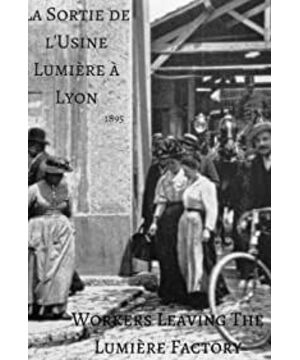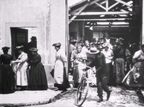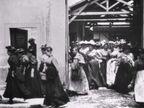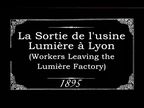Lu's cinematographic projector has two technical advantages, both in production and projection, it has many advantages over its competitors. Its portability—compared to a few hundred pounds of Edison's jinnet camera, it weighs only sixteen pounds; it can be both a camera and a projector, and can process film at the same time; The main ones are hand-crank power and limelight lighting, all of which make it extremely portable and adaptable. During the first six-month promotion of the Lu brothers in the United States, twenty-one photographers or projectionists toured the country, presenting their Cinématographe in various circus houses, bringing their most important competitor, Edison's The jinnit camera was crushed. (Jeffrey Norville-Smith, "World History of Cinema")
Louis Lumiere was originally a photographer, so there was no need for him to study long-term "travel" in order to complete his own film machine. His films have a peculiar style, that is, they are a kind of systematic "movement photos". Louis Lumiere, who made nearly a dozen films in 1895, chose his subjects in the manner of amateur photographers who had made the photographic equipment factory he ran rich. But his photography skills are superb. He was one of the pre-eminent photographers of his time, adept at quick photography and had an outstanding insight into the organization and composition of subjects. Louis Lumiere's first film, The Gates of the Factory, can be said to be a promotional film, which was publicly screened at a lecture on the development of the French photographic enterprise. The female workers wearing feather hats and aprons around their waists and the male workers pushing bicycles in the film still make people feel a kind of simple charm. (George Sadur, "The History of World Cinema")
View more about Leaving the Factory reviews






